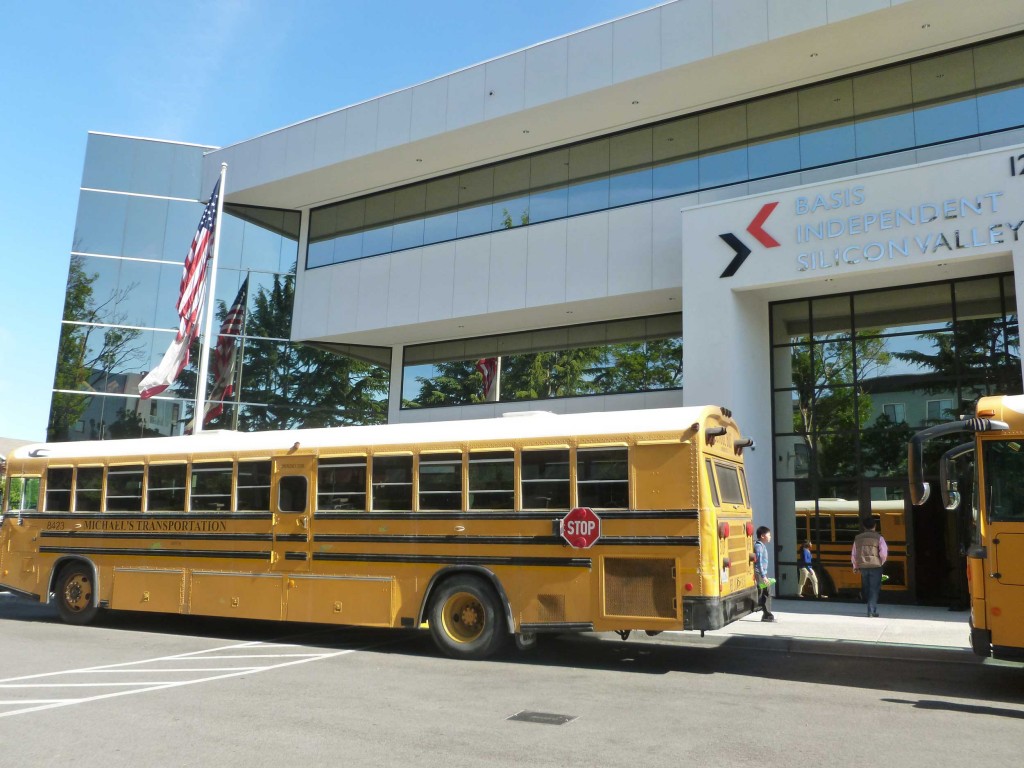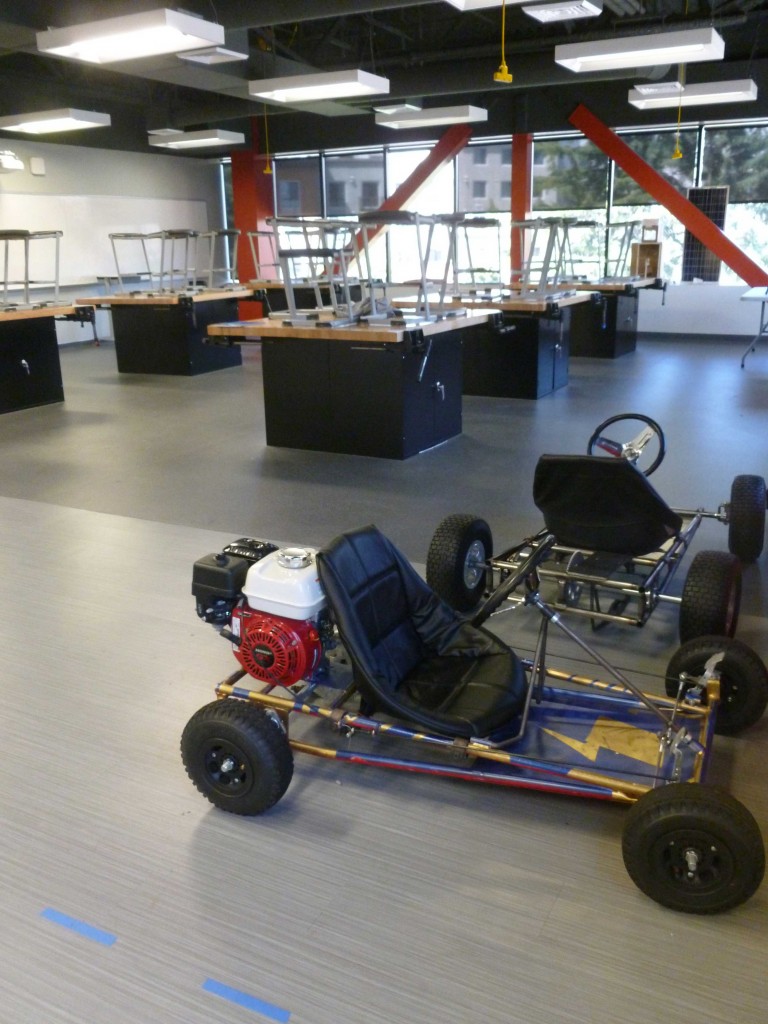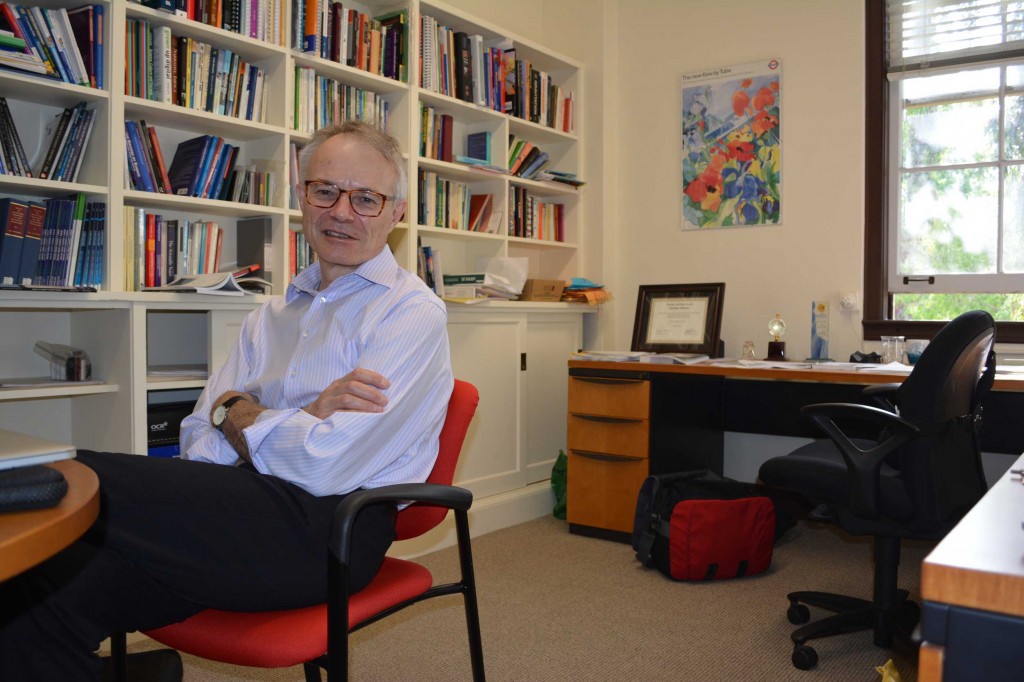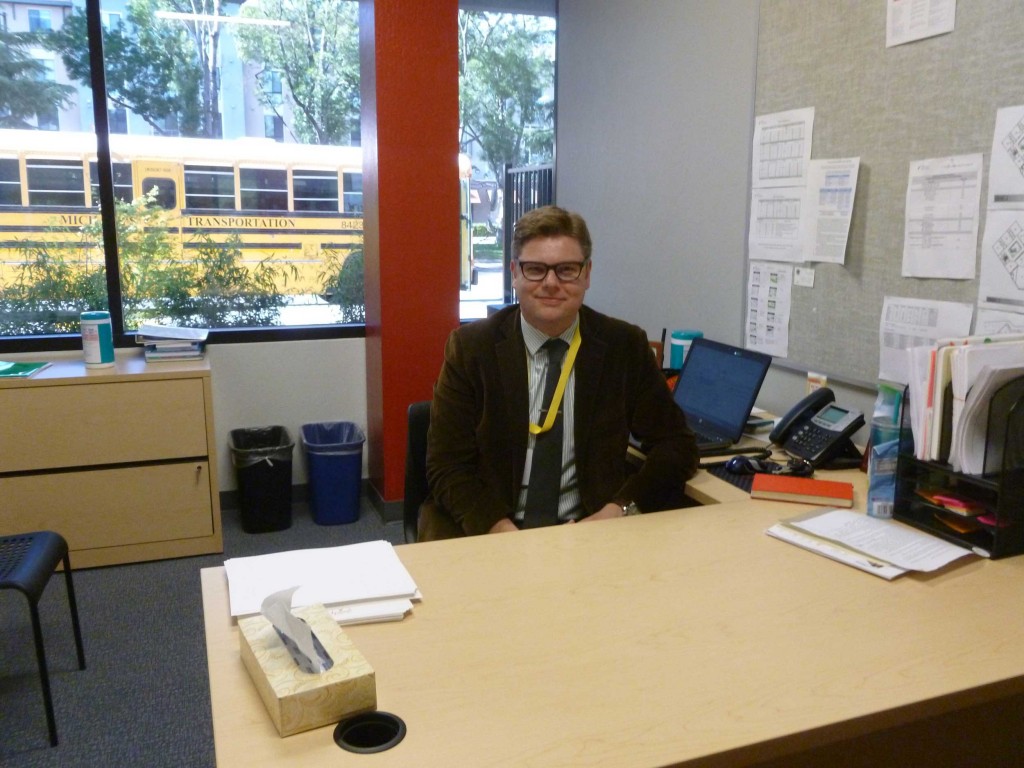In the heart of San Jose, just off Highway 280, stands a sleek black office building previously owned by IBM. Except for the yellow buses out front, there are no visible signs this building houses a private school instead of a tech company.

Now at the end of its first academic year, BASIS Independent Silicon Valley is a self-labeled “STEM-focused liberal arts program,” part of an educational startup called BASIS.ed, which manages a system of nationally ranked charter and private schools across the United States.
A science and math focus in middle and high school is particularly important to families in Silicon Valley, where many parents work in STEM fields and want their children receiving the best possible instruction.
“We hope to continue to be that draw for parents that want a STEM education, that want their children to really excel in these areas,” said math teacher Han Lee.
BASIS schools promise middle and high school students academic rigor surpassing other top school systems around the world, providing “an environment where students are not underestimated,” said Toby Walker, head of school at BASIS Silicon Valley.
They share an advanced curriculum which involves taking biology, chemistry and physics from sixth to eighth grade (three hours per week, per class), the option to take AP World History in eighth grade and a math program that places students by ability. This year, BASIS Silicon Valley has one fourth grader taking Algebra 2.

The number of Advanced Placement classes required to graduate BASIS is six, but according to Director of Student Enrollment Vanissa Hernandez, the average BASIS student takes 10 to 12.
Results from the school are still forthcoming, as the first twelfth-grade class of BASIS Silicon Valley students will graduate next year, but the school is already drawing interest from families that attend local private schools.
Ananta Iyengar, a current BASIS parent, first learned about BASIS in summer 2014 from a news article. Iyengar was attracted to the school based on national rankings and BASIS schools’ performance on the Programme for International Student Assessment, known as PISA. His daughter just wrapped up eighth grade there after transferring from the private school, Challenger, in San Jose.
PISA tests over half a billion students in more than 70 countries in reading, math and science. Countries such as Singapore, South Korea and Germany regularly outperform American students in these categories, but according to a promotional video on BASIS Silicon Valley’s website, BASIS students outperform average students from the highest-ranking region — Shanghai, China.
Another major draw for parents is the middle school curriculum of teaching biology, chemistry and physics simultaneously. In that educational model, which is followed by many other nations in Europe and Asia, “you don’t do physics one year and it’s another four years before you do physics again,” said Jonathan Osborne, Stanford’s Kamalachari Professor of Science Education and PISA science framework director.
And typically, American high school science courses do not expect prior subject knowledge from middle school. According to Osborne, “The content doesn’t seem to build on what’s happened before. Everyone seems to restart from scratch, which is stupid.”
In biology class on a recent Thursday, four students grappled with the details of genetic transcription, or the way DNA is copied into RNA. Three of the students sat on tables and a couple took pictures of the board on their cell phones as a study tool.

Anuradha Murthy, the teacher, compared the way nucleotides cluster to a DNA template to the way fans gather around Bollywood celebrity Salman Khan. Three of the four students got the reference.
Hernandez and Walker attribute BASIS’s success to their teachers — and the school has certainly had their pick of talent. According to Hernandez, BASIS Silicon Valley received 95 applications per teaching position, and there are 13 PhDs on the faculty.
Lee said that BASIS Silicon Valley teacher salaries are comparable to those of public school teachers. He was attracted to BASIS because of the school’s academic approach: “These students are really driven and they want to succeed,” he said. “The administration really focuses on supporting students and teachers in their endeavors.”
Being located in Silicon Valley has “less tangible” effects on BASIS education too, according to Walker. “The environment feeds tech innovation,” he said. “It’s right here on our doorstep, and it really feeds and fuels the imagination of the young people in the building.”
This fall, BASIS Silicon Valley will grow from 575 students to a full capacity of 800. According to Walker, signs are good that BASIS Silicon Valley will live up to the reputation of its forerunners such as BASIS Scottsdale, currently ranked second in U.S. News and World Report’s “Best High Schools.” All BASIS schools take an annual evaluation test for internal use, and Walker said BASIS Silicon Valley students are already outperforming Scottsdale in a number of areas on that test.
Tuition next year will be $23,750. Unlike other private schools in the area, BASIS Silicon Valley does not currently offer financial aid.

However, it’s still in the mid-range in terms of private school tuition — more expensive than Stratford and Challenger, but less expensive than Harker.
The school does not collect demographic data of their student body, but Hernandez said the student body is heavily South Asian and Asian.
BASIS Silicon Valley does not pretend that their environment works for all families. “We’re never going to be the school known for our athletic program,” said Walker, noting that families come to BASIS for its academics.
Physical education and arts classes become electives after seventh grade, but students do take a range of humanities classes including two years of Latin in middle school and AP English, U.S. Government and World History in high school.
There’s no playground — just a small grassy area where students eat lunch — and an outdoor basketball half-court. There’s a full indoor basketball court where gym class is taught. Opportunities are available, with an extra fee, for students to pursue extracurricular athletics like cricket and squash off-campus.
But even families who prioritize STEM education are not necessarily choosing BASIS. Entrepreneur and software engineer Ramesh Srinivasan’s daughter was admitted to BASIS Silicon Valley, but the family chose the local public high school instead. He felt he and his wife would be able to help their daughter achieve at the same level as BASIS students.
Research on the effect of role models on student performance agrees with Srinivasan.
“One of the biggest influences on whether people go on with STEM or not is whether they have a parent or know somebody who is engaged in STEM,” Osborne said.
